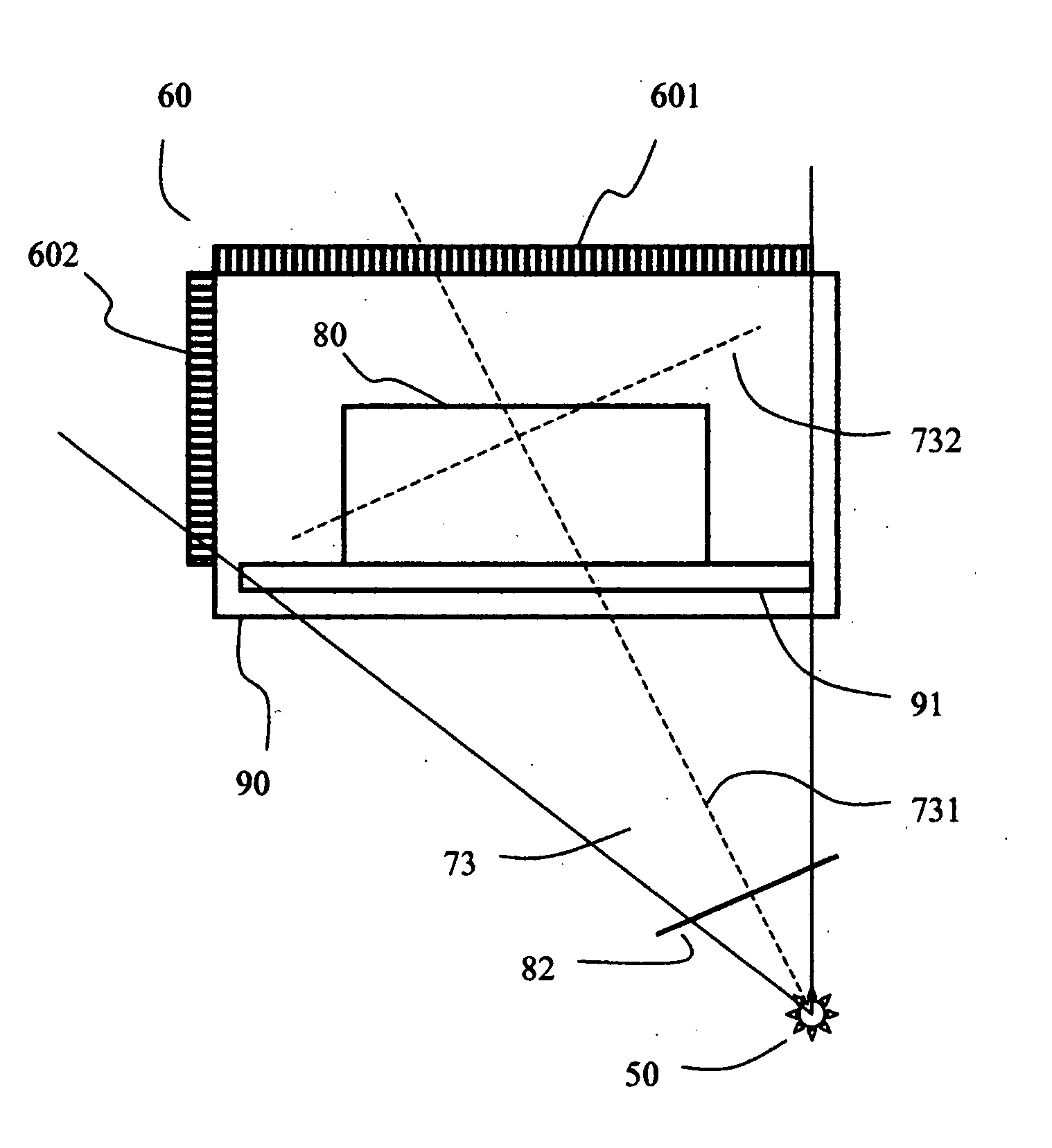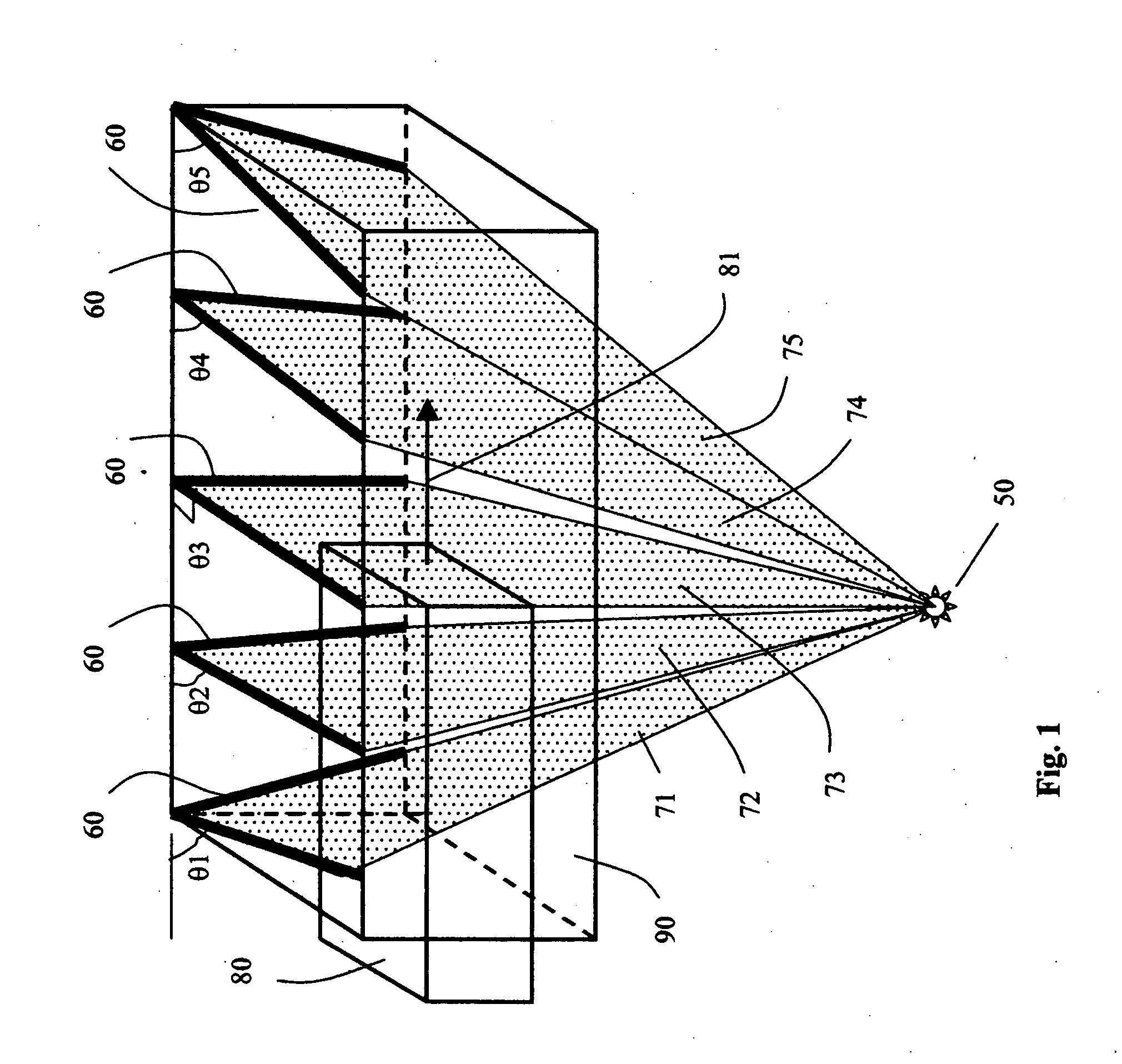Laminographic system for 3D imaging and inspection
a 3d imaging and inspection technology, applied in the field of 3d imaging and inspection laser systems, can solve the problems of inability to build such a giant gantry, and inability to achieve the desired or optimal way of detecting, etc., to achieve the effect of improving the detection criteria
- Summary
- Abstract
- Description
- Claims
- Application Information
AI Technical Summary
Benefits of technology
Problems solved by technology
Method used
Image
Examples
Embodiment Construction
[0030] In describing the preferred embodiment and its alternatives, specific terminology will be used for the sake of clarity. However, the invention is not limited to the specific terms so used, and it should be understood that each specific term includes all its technical equivalents which operate in a similar manner to accomplish similar purpose.
[0031]FIG. 1 shows a preferred embodiment of the present invention as used for baggage screening. For the sake of clarity in the drawings, the ordinary details relating to the mechanics of the system have been omitted as these are well known to a person skilled in the field.
[0032] As shown in FIG. 1, an object or bag 80 is transported through a tunnel 90 in the direction of the arrow 81. Not shown in this figure to avoid the clutter are the conveyor belt, the motors and the transport mechanism and other details which are well known to a person skilled in the field.
[0033] As illustrated in FIG. 1, when the object moves through the tunne...
PUM
 Login to View More
Login to View More Abstract
Description
Claims
Application Information
 Login to View More
Login to View More - R&D
- Intellectual Property
- Life Sciences
- Materials
- Tech Scout
- Unparalleled Data Quality
- Higher Quality Content
- 60% Fewer Hallucinations
Browse by: Latest US Patents, China's latest patents, Technical Efficacy Thesaurus, Application Domain, Technology Topic, Popular Technical Reports.
© 2025 PatSnap. All rights reserved.Legal|Privacy policy|Modern Slavery Act Transparency Statement|Sitemap|About US| Contact US: help@patsnap.com



